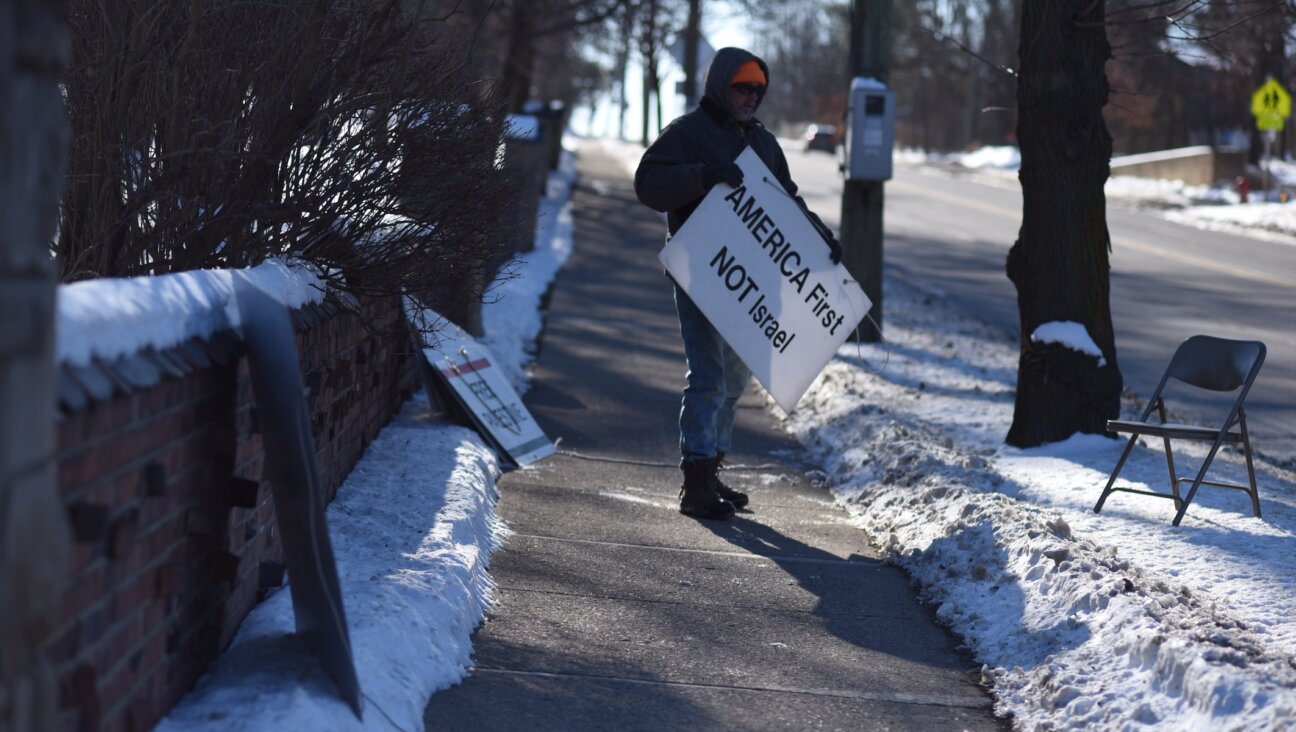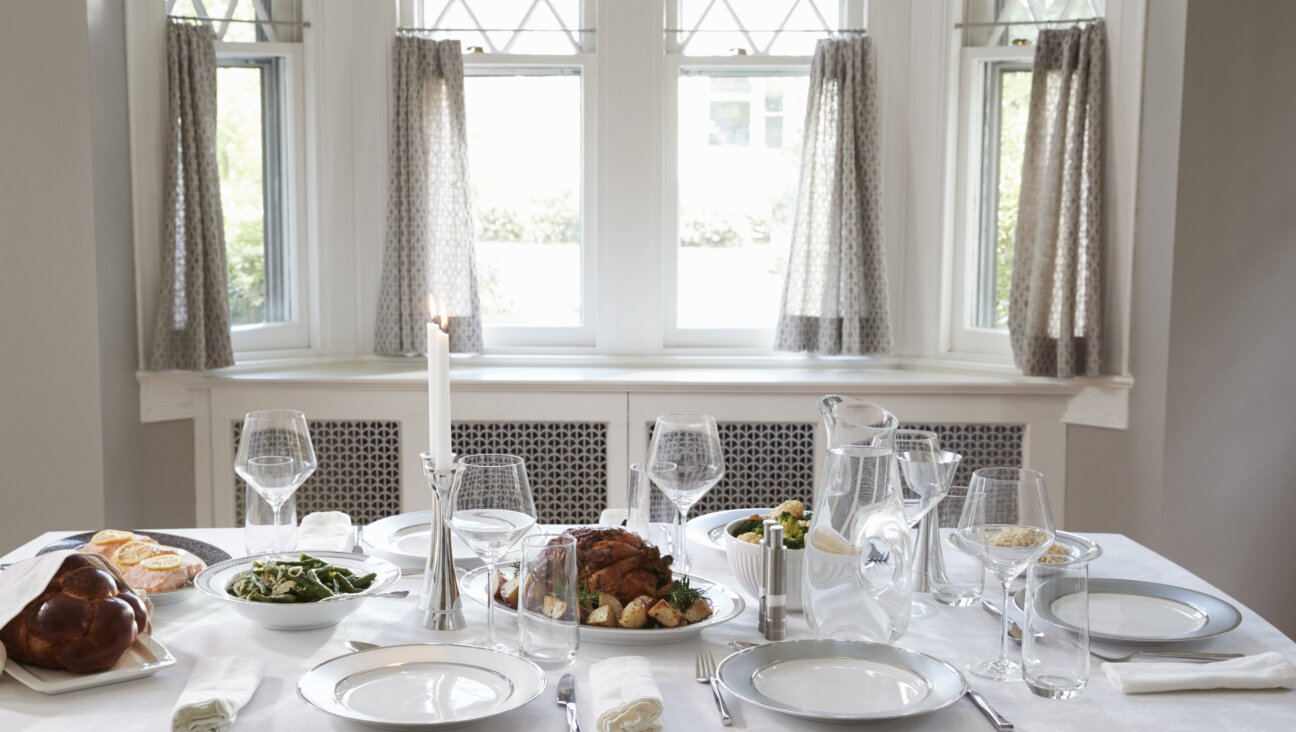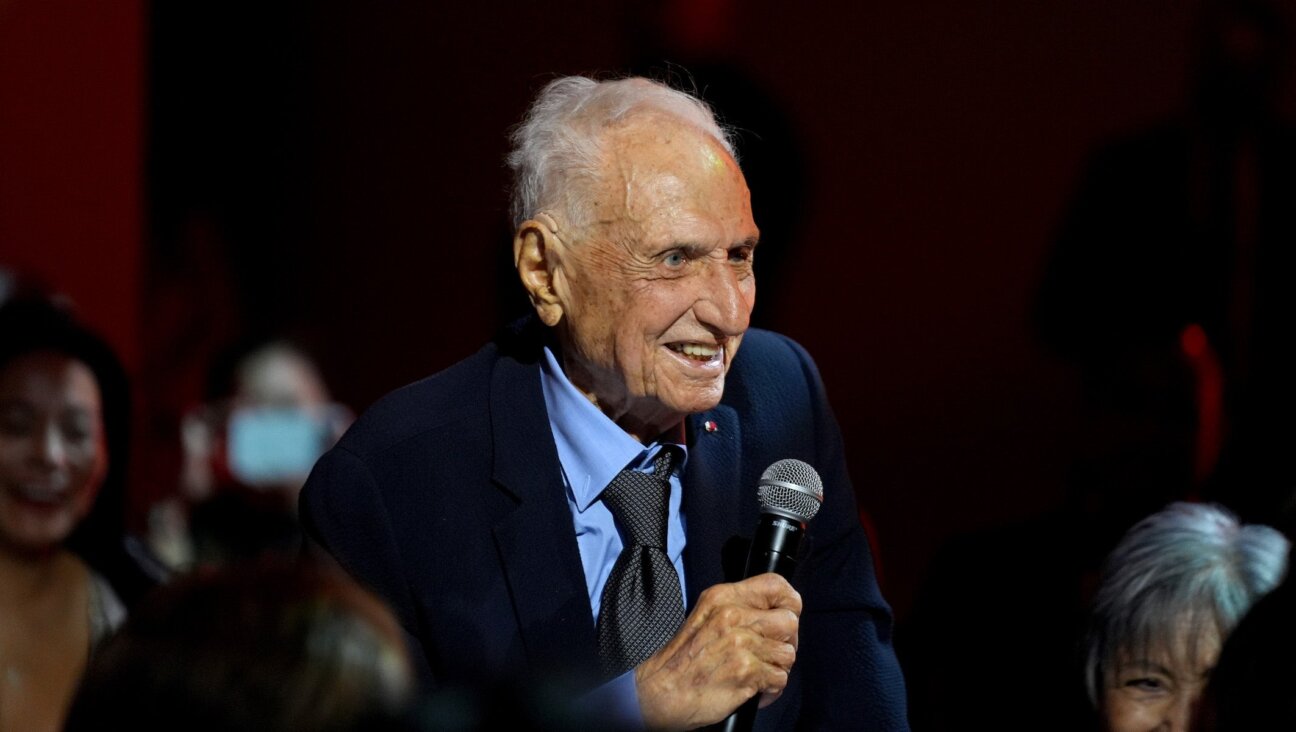Star chef Alon Shaya helped a Holocaust survivor recreate recipes from his prewar youth

Graphic by Angelie Zaslavsky
(JTA) — Visiting Yad Vashem a decade ago, Alon Shaya got to see some of the Jerusalem Holocaust museum’s culinary artifacts that aren’t always on display to the public.
It was the James Beard Award-winning chef’s introduction to the fact that concentration camp inmates distracted themselves by recalling and secretly writing recipes — on scraps of hidden paper and cloth — from their prewar lives.
“Food is such a big part of everything I do. It really moved me that people who were trapped, who were facing almost certain death, were helped by these memories of food. It reminded me of the power of food,” Shaya said. “They would not have spent their last moments documenting this if they did not think this was important.”
The Israel-born Shaya was raised in Philadelphia and now lives in New Orleans, where he and his wife, Emily, own Pomegranate Hospitality. The company runs several restaurants, including Safta in Denver and Saba in New Orleans. One will open soon at the Four Seasons Hotel, also in New Orleans.
Over the years Shaya kept thinking about those recipes at Yad Vashem.
“Is anyone cooking these recipes? Do the families know they exist?” he wondered.
Seven years later, on a November 2018 visit to the U.S. Holocaust Memorial Museum in Washington, D.C., Shaya would explore its food-related artifacts. He learned about Steven Fenves, a Holocaust survivor and museum volunteer, and saw its collection of more than 140 Fenves family recipes.
Fenves recalled that when he, his mother and older sister were forced from their home on the Yugoslavia-Hungary border in 1944 — his father had already been taken away — there was a line of people on the staircase jeering while waiting to loot the place. Hidden in that crowd, unbeknownst to the Fenveses, was Maris, their former longtime cook. Maris wasn’t there to steal but to surreptitiously rescue items of sentimental value.
After the war, she surprised the family by returning the recipe book, schoolwork, and lithographs and artwork by Fenves’ mother, who had perished in the Holocaust. Fenves was liberated in 1945, as was his sister and father, although his father died about four months later.
Fenves, now 89, had memories of the family going to the market together, choosing seasonal vegetables, and coming home and pickling them together. He remembered potato circles, with yeasted bread and mashed potatoes, which he and his sister were not allowed to eat; those were the special occasion foods for guests.
He and his sister loved a roast turkey dish that involved pulling the turkey off the bone, grinding the meat and then packing it back on before baking. The two would work their way through the ground meat to reach their favorite part, the bone.
But Fenves never prepared those foods of his youth. And that’s where Shaya stepped in.
The chef wanted to help Fenves experience again the tastes of the food made by his mother and grandmothers — food he hadn’t savored in 75 years.
Fenves translated 13 recipes from Hungarian and the book’s table of contents working off a high-resolution copy, as the original is quite fragile, said Edna Friedberg, a historian with the U.S. museum.
While Fenves has an affinity for languages — even as a child he was trilingual — translating the “rescued recipes” was beyond entering them in Google translate. The recipes are handwritten, so he had to decipher 100-year-old script that may have regional differences of language. Some survivors’ recipes may be written in a combination of languages, such as Yiddish and Polish. And it’s an emotional process for survivors remembering their losses. (The museum is accepting donations to fund the translation and rescue of more recipes so that prewar food traditions can continue.)
Shaya searched the translations for dishes he had never made and recipes to which Fenves had a connection. He chose the potato circles, the turkey, a walnut cake and semolina sticks, which Fenves identified as a delicacy he missed.
Fenves told Shaya the snack — crispy on the outside, creamy on the inside — needed to look like fish sticks. So Shaya made a Cream of Wheat-type substance cooked down with milk, then lightly breaded and fried. The dish was perfection, according to Fenves. It’s also now in regular rotation at the Shaya home.
“The semolina sticks and ground turkey exactly replicated what I remember,” Fenves told an audience in a live video presented by the museum.
The recipes are largely lists of ingredients, without techniques and oven temperatures, so Shaya worked with Fenves to recreate them. Due to the pandemic, Shaya worked in New Orleans and shipped Fenves food packed in dry ice. Fenves would heat and eat at home and provide Shaya with critiques. The process took the better part of a year.
Videoconferencing made it possible for Shaya to see Fenves and his family, even if Shaya could not serve him in person, as he wished.
“To send him food and have him be able to taste those things for the first time in 75 years, that was one of the most moving things I have ever done,” Shaya said.
Friedberg, the museum historian, said Shaya brought an “incalculable” amount of joy to Fenves.
“The importance of the recipes books is the way it makes vivid and real and visceral what was lost during the Holocaust,” Friedberg said. “We have to make sure that Jews are not flattened into victims. The partnership of Alon and Steve is one of the most powerful examples of how to appreciate prewar Jewish life.”
















